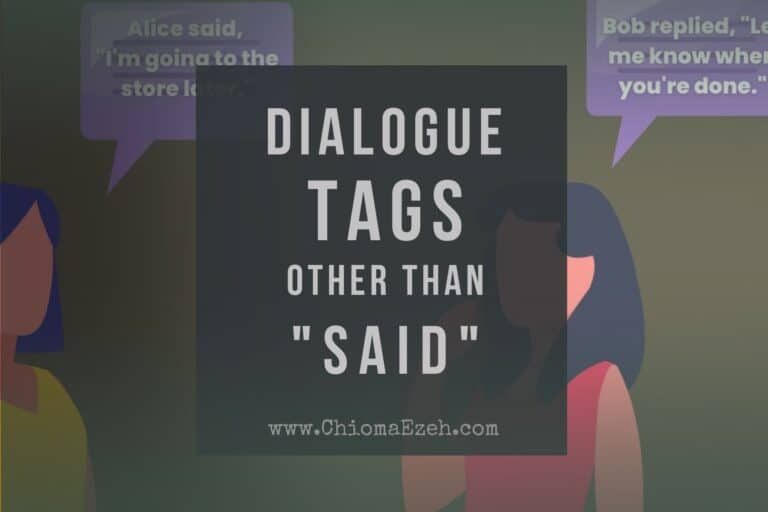How To Start Dialogue In A Story: 9 Easy Ways
If you’re struggling with starting dialogue in your story, I’m here to share 9 easy ways to do it. Sometimes, knowing how to start dialogue in your story May go a long way in helping you plot your story and develop your characters.
These techniques I’m going to share are so easy yet powerful that you can break your writer’s block and create engaging conversations that will steal the centerpiece of your readers attention.
👉See our overview guide to writing dialogue for authors
Let’s Talk
Are you a writer aspiring to pen a masterpiece that never fails to captivate? Look no further. Reach out to us and uncover how we can help you to take your writing to unprecedented heights!

How To Start Dialogue In A Story
As with most things in writing, the hardest part in dialogue writing is often to get started. It’s not as easy as it sounds, given that many writers get overwhelmed with plotting their story that they take little details like dialogue for granted. So, how can you start dialogue in your story? Well, here are 9 tips for writing engaging dialogue right off the bat.
1. Start with a Greeting or Introduction
One of the simplest ways to start a dialogue is with a greeting or introduction. You can use dialogue to introduce your characters and set the scene. Try to keep it as natural and relatable as you can so your readers can feel the authenticity in your dialogue.

You don’t want to start introducing your characters with exposition (except there’s a backstory). So, keep it real.
Example:
“Hey, Sarah,” Tom said, extending his hand.
“Nice to meet you, Tom,” Sarah replied, shaking his hand. “I’ve heard a lot about you.”
While this works great with screenplay, you should use it sparingly for other forms of writing.
However, let the dialogue count. It makes no sense to introduce characters with dialogue just for the sake of it. Make sure that the dialogue serves a purpose in your story. It should either reveal information, expose the character’s personality, drive the plot, or create tension.
👉See our article on how dialogue affects a story
2. Use a Question
You can initiate dialogue with a question such that it creates curiosity or piques your readers’ interest. Generally, questions are one great technique that builds engagement. And naturally, it encourages readers to want to learn more.

You can ask questions about anything – how your character feels, their opinions, even facts about the world they live in. This is one technique that I use a lot to reveal information or delve deeper into a character’s thoughts (such as in monologues).
Example:
“Have you ever wondered why the stars shine so brightly at night?” Mary asked, her eyes fixed on the sky.
3. Begin with an Action
As usual, an action is just what it is. It doesn’t just do the job of not only revealing information about your character; it creates tension.
When you start a dialogue with an action, it lets you create a scene that is not only powerful but dynamic and engaging. You can use it to create an opportunity that can reveal your characters’ motivations.
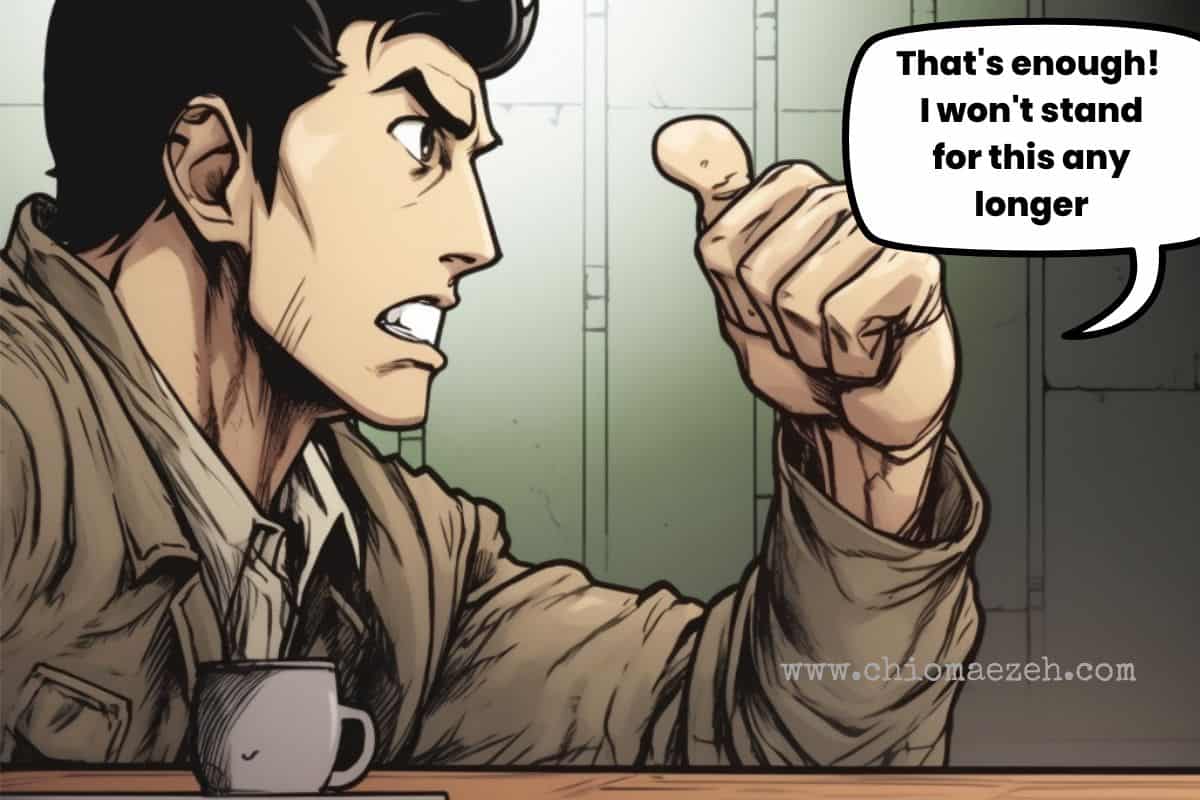
That’s because as characters react to the “action,” they can show (not tell) what they think, how they think, their traits, goals, and motivations. In addition, action can also set the tone and mood of the scene, which impacts your story’s theme.
For instance, let’s consider this action taken by John in the example dialogue below:
For Example:
Slamming his fist on the table, John screamed, “That’s enough! I won’t stand for this any longer.”
From the example, we can see that John’s anger (character trait) is revealed in that dialogue (by slamming his fist). We also get to see his motivation (rebellion to oppression or something deeper, who knows)
4. Use an Exclamation or Emotional Outburst
Starting a dialogue with an exclamation or emotional outburst is a nice way to grab your readers’ attention. You can use this technique to reveal emotions or add passion and intensity to a scene. But be careful not to overuse this. Using too much of it can often make the dialogue feel forced or melodramatic.
Example:
“I can’t believe you would do that to me!” Emily cried, tears streaming down her face.
See how the exclamation intensifies the tension in that scene? Of course, this tension is reinforced by the action beats (crying and tears streaming down her face).
👉See our article on how dialogue affects the character in a story
5. Start With a Statement
As easy as it sounds, you can start a dialogue with a simple statement. Just think up any statement that can serve a purpose and incorporate that into dialogue. This method is very straightforward.
You can use dialogue to reveal information or opinions in a straightforward manner. This is especially useful when you want to establish a character’s viewpoint or make a declaration.
Example:
“We need to leave this place immediately,” James declared, his voice firm and determined.

While the example dialogue sounds pretty straightforward, it ties into a purpose – which is to move the plot forward (as they plan to leave)
6. Include Dialogue Tags
Dialogue tags help readers identify the character that is speaking. They can also provide context for the conversation.
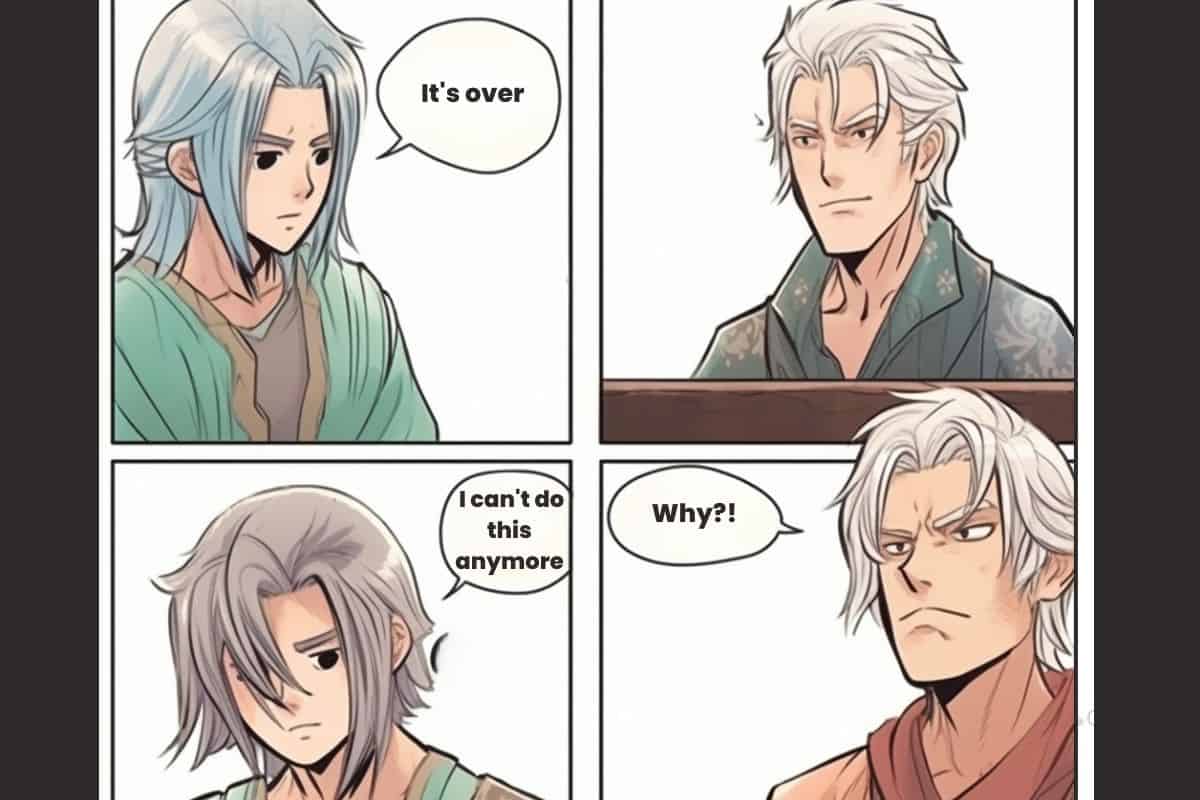
Dialogue tags like “whispered,” “shouted,” or “mumbled,” can show how a character feels (by their emotions), attitudes, or intentions. While this is a great way to start dialogue in your story, be mindful not to overuse them. When overused, they can clutter your writing and take away from its authenticity.
Example:
“It’s over,” she whispered, barely audible. “I can’t do this anymore.”
👉For deeper insight, see our post on how to use dialogue tags correctly
7. Use Conflict or Disagreement
Conflict and disagreement is a great way to initiate dialogue. Not only can you use it to create tension, you can move your story plot forward, or reveal your character’s traits. If you want to use this technique, make sure it’s relevant to your story and doesn’t feel forced.

Example:
“I can’t believe you think that’s a good idea,” Mark argued, his face red with anger. “It’s a disaster waiting to happen.”
I really like using conflict as opening lines of dialogue when I write. I notice that it serves all several purposes in a plot:
- Create tension and suspense
- Reveals character traits
- Grabs attention
- Builds engagement
- Can move the plot.
It’s almost like using a stone to kill several birds.
👉 See how you can use dialogue to drive the plot of a story
8. Begin with a Compliment or Criticism
Depending on the context of the scene, a compliment or criticism in dialogue can reveal your character’s personality or create tension. While compliments can reveal relationship between characters, criticism can create tension or conflict.
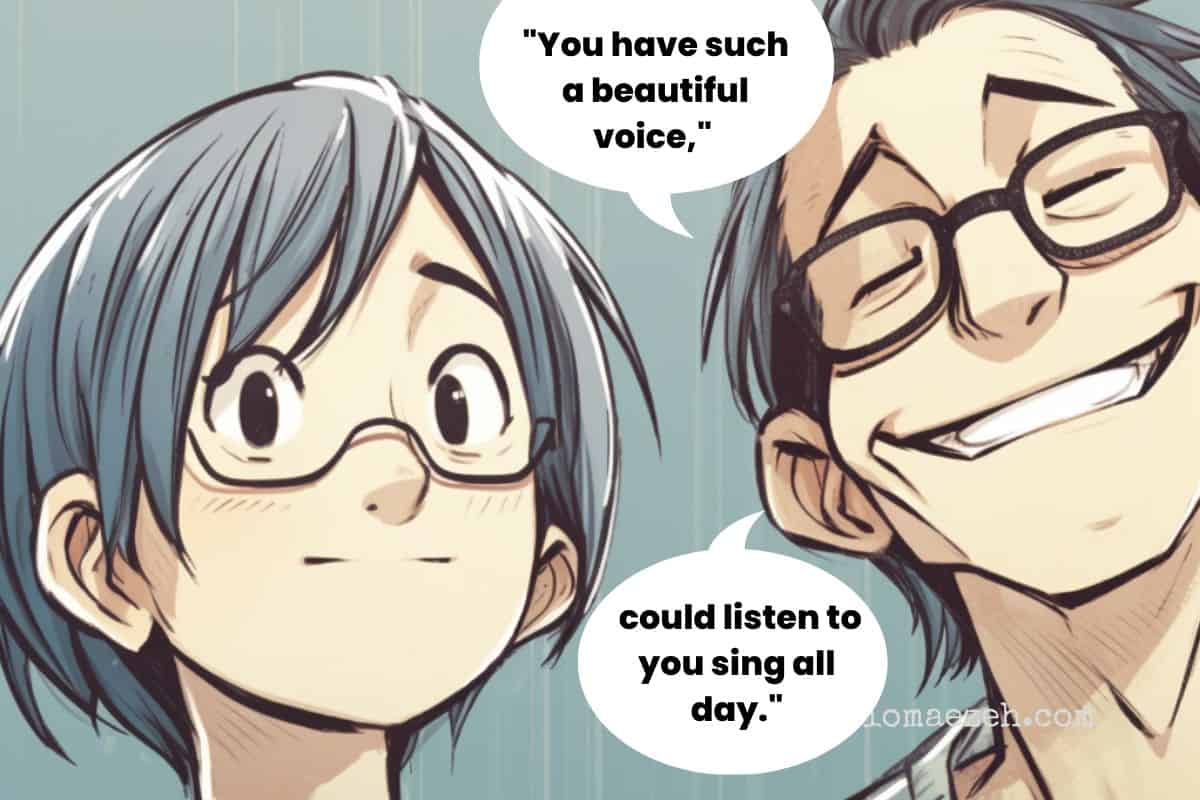
I often use this technique to showcase a character’s opinions or beliefs. But you can use it whatever way, provided it serves a purpose in your plot.
Example:
“You have such a beautiful voice,” Aaron said with a smile. “I could listen to you sing all day.”
9. Use Subtext or Indirect Dialogue
Subtext or indirect dialogue is a more subtle way to start a conversation. Instead of directly stating a character’s thoughts or feelings, you can imply them through their words or actions. This can add depth to your characters emotions and make your readers connect more to them.
Example:
“It sure is chilly in here,” Lisa remarked, shivering as she pulled her coat tighter around her. (This indirectly suggests that someone should close the window or turn up the heat)
👉To learn more, read our guide on writing subtext in dialogue
FAQs On How To Start Dialogue In A Story
How Important Is Dialogue In A Story?
Dialogue is important because it brings your characters to life, reveals their personalities, emotions, and motivations. It also helps move the plot forward and can create tension, conflict, or connection between characters.
How Can I Make My Dialogue Sound More Natural?
To make your dialogue sound more natural:
1. Listen to conversations in real-life and take note of speech patterns.
2. Keep the dialogue concise and simple (we speak in simple English!)
3. Avoid overly formal or complex language.
4. Make sure your characters’ speech reflects their age, background, and personality.
5. Use contractions, slang, and colloquialisms where appropriate.
6. Read your dialogue out loud to check for flow and authenticity.
When Should I Use Dialogue Tags?
Use dialogue tags only when necessary. Dialogue tags should help readers identify who is speaking and provide context for the conversation. So use dialogue tags only when you need to introduce a new character to a dialogue or conversation
How Do I Avoid Repetitive Dialogue?
To avoid repetitive dialogue:
1. Vary your sentence structure and length.
2. Use a mix of dialogue tags, action beats, and thoughts to break up the conversation.
3. Introduce subtext or indirect dialogue to create intrigue and depth.
4. Ensure each character has a distinct voice, vocabulary, and speech pattern.
How Can I Create Tension And Conflict In Dialogue?
To create conflict in dialogue, use disagreement, contrasting opinions, or underlying emotions to create to engage characters. Make sure the conflict is relevant to the story and doesn’t feel forced.
How Do I Use Dialogue To Reveal Character Backstory Or Exposition?
Use dialogue to reveal character backstory or exposition by asking questions, using monologues, inner thoughts and other relevant information. Avoid “info-dumping” or making characters sound like they’re reciting facts. Instead, use questions, opinions, or reactions to share backstory or exposition engagingly.
Can I Use Dialects Or Accents In My Dialogue?
You can use dialects or accents in your dialogue. Accents create authentic and natural conversations. However, too much accent can make your dialogue difficult to read or understand. Use them only sparingly, and ensure they remain consistent throughout your story.
Video Recommendation: How To Start Dialogue In A Story
Final Notes: How To Start Dialogue In A Story
Now that you’re equipped with these nine effective ways to start dialogue in a story, you can begin to create engaging and dynamic dialogues. Experiment with the different techniques to find the best for your genre or story. As you practice and refine your skills, you’ll find that your characters come to life, and your plot becomes more authentic and compelling.
That said, the key to writing great dialogue is authenticity. Keep your conversations natural, relatable, and true to your characters’ personalities.

![5 Types Of Outer Dialogue You Should Know [Free Template]](https://chiomaezeh.com/wp-content/uploads/2023/03/types-of-outer-dialogue-768x512.jpg)

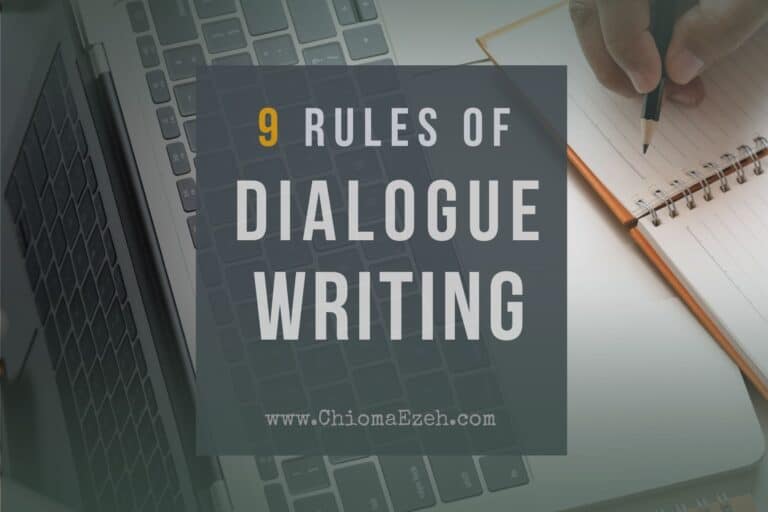
![6 Powerful Elements Of Dialogue Writing [Tags, Action Beats, Subtext & More]](https://chiomaezeh.com/wp-content/uploads/2023/03/Elements-of-dialogue-writing-768x512.jpg)

